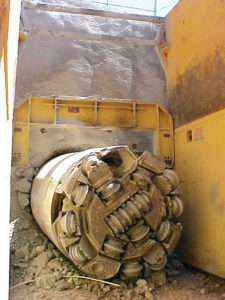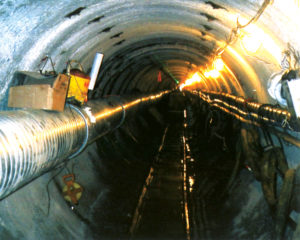![65 Years of Innovation and Experience [default]](https://www.robbinstbm.com/wp-content/uploads/2017/04/Side-Bar-Blue-Blocks_70-Years.jpg)
A Solution for Every Condition: Search our Project Database
Project Map
FEATURED PRODUCT: CROSSOVER MACHINES
Our History
A Legacy of Innovation
Information 24/7
News & Media
Insights in the Industry:
Read the Robbins Blog
 Arizona’s South Mountain water tunnel is part of a 27.3 km (17 mi) water pipeline that delivers 178 million liters (47 million gallons) of water a day to the city of Phoenix. The pipeline serves the Ahwatukee Foothills area, which has experienced 145% population growth in the last decade.
Arizona’s South Mountain water tunnel is part of a 27.3 km (17 mi) water pipeline that delivers 178 million liters (47 million gallons) of water a day to the city of Phoenix. The pipeline serves the Ahwatukee Foothills area, which has experienced 145% population growth in the last decade.
In 2000, the City of Phoenix awarded the $11 million USD construction contract to Affholder Inc. Affholder chose a refurbished Robbins Double Shield TBM adapted for the variable rock conditions in the tunnel.
The tunnel passes through three types of rock. The first and last sections of tunnel consist of the hard, coarse-grained rocks granite and gneiss. The middle of the tunnel consists of two infiltrations of alluvial soils. This soil is mixed grain and exhibits secondary calcification. Locally known as caliche, these soils can exhibit behavior similar to rock.
To address the challenge of soil deposits, tunnel design consultants recommended steel ribs with lagging for tunnel support.
Robbins rebuilt the 2.4 m (7.9 ft) diameter Double Shield TBM for the variable rock conditions in the tunnel. The TBM design included dual propulsion systems, a protective shield, recessed cutters, and the ability to reverse cutterhead direction.
The TBM featured 432 mm (17 in) cutters and a maximum thrust of 4,372 kN (1,006,000 lb). The 60 Metric ton (66 US ton) machine was capable of generating 194,172 N-m (146,000 lb-ft) of torque.
 The TBM began boring the 1.85 km (1.15 mi) long tunnel in December 2000 and encountered its first soil deposits three months later. The soft soil prompted a switch from rock bolts to steel ribs and wood lagging for the tunnel lining. The machine reached the second infiltration of soil after boring through a 360 m (1,181 ft) section of gneiss. The TBM excavated the final sections of the tunnel with no problems and finished on schedule in August 2001.
The TBM began boring the 1.85 km (1.15 mi) long tunnel in December 2000 and encountered its first soil deposits three months later. The soft soil prompted a switch from rock bolts to steel ribs and wood lagging for the tunnel lining. The machine reached the second infiltration of soil after boring through a 360 m (1,181 ft) section of gneiss. The TBM excavated the final sections of the tunnel with no problems and finished on schedule in August 2001.
The crew worked in 9-hour shifts and the maximum rate of advance was 26 m (85.3 ft) in a single shift. The TBM average rate of advance was 1.5 m (4.9 ft) per hour.

 Close
Close